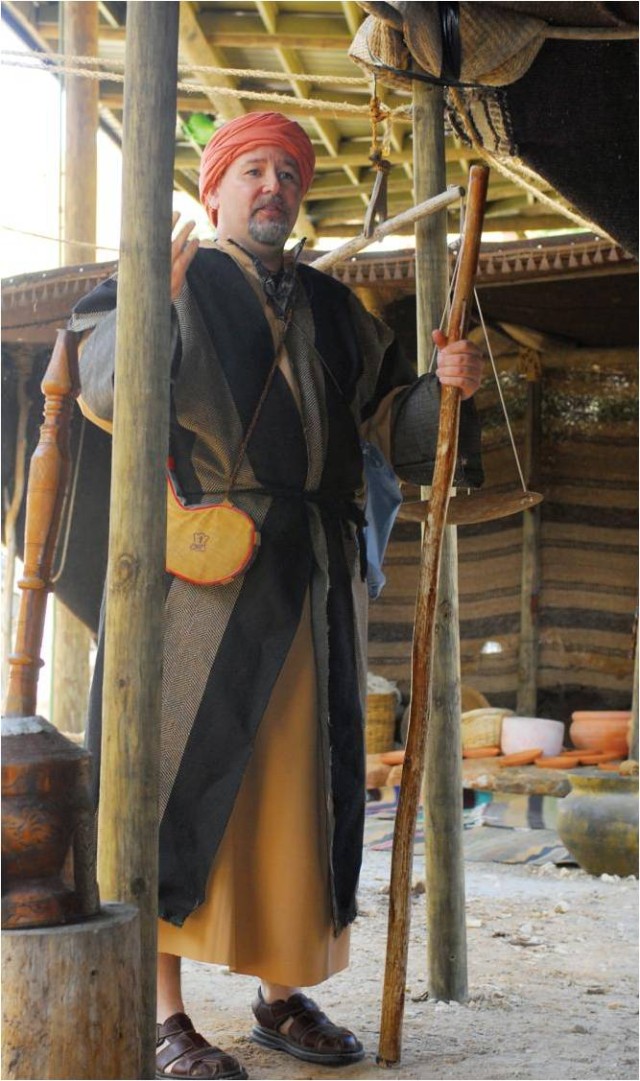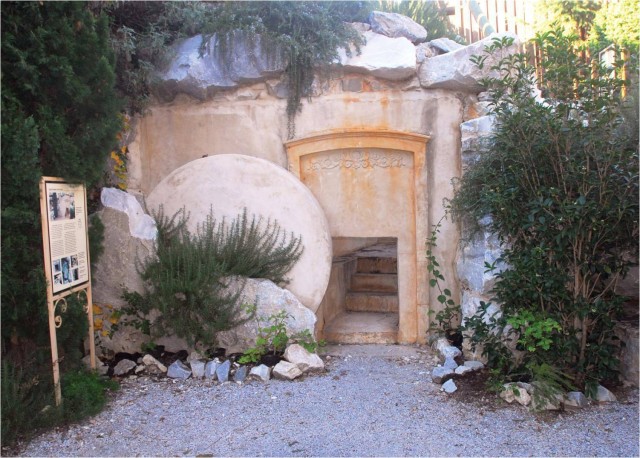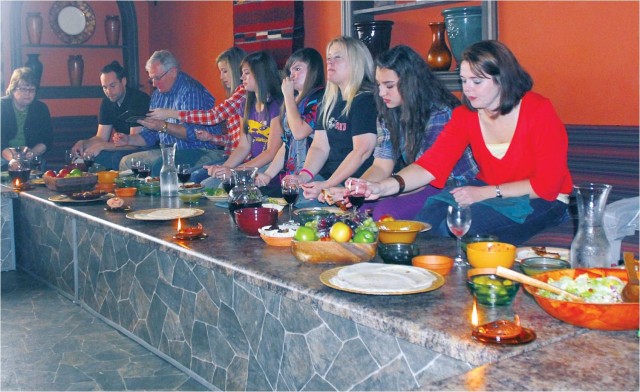If you've ever been curious what food was served at the Last Supper or wondered how baby Moses stayed afloat in a basket of reeds, you are invited to travel back in time and have some of your questions answered at the Explorations in Antiquity Center. This historical museum in LaGrange, Ga., features full-scale archaeological replicas, including a Roman aqueduct, a New Testament cross, a Herodian Period tomb, Israelite and Canaanite altars, a stone quarry, a Judean watchtower and much more.
Unlike any museum I've ever seen, this interactive experience completely immerses you. Not only are the buildings carefully designed based on excavations but the plants reflect flora indigenous to the Middle East.
Standing under a goat hair tent facing a waterfall surrounded by papyrus and bulrush plants, a guide will explain the importance of water to a nomadic desert people. The guide will point out other aspects of the shepherd's daily life, such as a cooking fire, a well and a temporary sheep fold made of sticks. The top of the sticks were set on fire at night to keep predators from stealing sheep.
The Life of the Farmer exhibit features an orchard, with olive trees, almond trees, Cyprus, cedar, fig and pomegranate trees. Near them are located the tools of food production: an oil press, a water wheel, winepress, threshing floor and grape presses.
In the village portion of the courtyard, visitors can climb a tower, walk inside an ancient house and visit the stable.
This realistic setting comes alive during the holidays with guided "Follow the Shepherds Walks." It's the nativity story in all three dimensions. Explore the manger, set inside a rock-cut cave under the star of Bethlehem, and listen to your guide explain the historical and cultural contexts of the first Christmas.
To make your visit to Explorations in Antiquity a completely interactive experience, try adding the element of taste. The Biblical Meal experience includes four courses with more than a dozen different food items. A traditional dinner might include hummus, olives, a dried fruit spread, soup, salad and chicken as well as Passover-specific foods, such as bitter herbs eaten to remind Jews of their bitter slavery in Egypt.
The guide who leads you through the garden will walk you through the traditions and misconceptions related to a first century meal, particularly the Last Supper. DaVinci's famous painting has more than a few factual errors: it pictures rolls instead of unleavened bread, fish instead of lamb, and the disciples would have been reclining on the floor while dining.
My guide, Brian Wynn, explained that we are provided seats in a Roman Period banquet hall for our comfort. If you want to get a glimpse of the type of "upper room" where the real Last Supper would have taken place, a second banquet room features a U-shaped triclinium table.
Explorations in Antiquity has several programs throughout the year. Many are geared toward younger ages, such as the Kid's Dig Experience, where children can search for archaeological finds, and the Shepherd's Bread Experience, where they can prepare bread and butter to eat, wear a desert head covering called a kafiyah and learn a customary Hebrew blessing.
Reservations are required for the bread making, meal experiences and guided tours. Group reservations for the Follow the Shepherds Walks are recommended. The walks begin on the half hour from 6 to 9 p.m. today through Sunday and Dec. 18-20. It's free for active-duty military and $10 for general admission. For more information, call 706-885-0363 or visit www.explorationsinantiquity.net.






Social Sharing